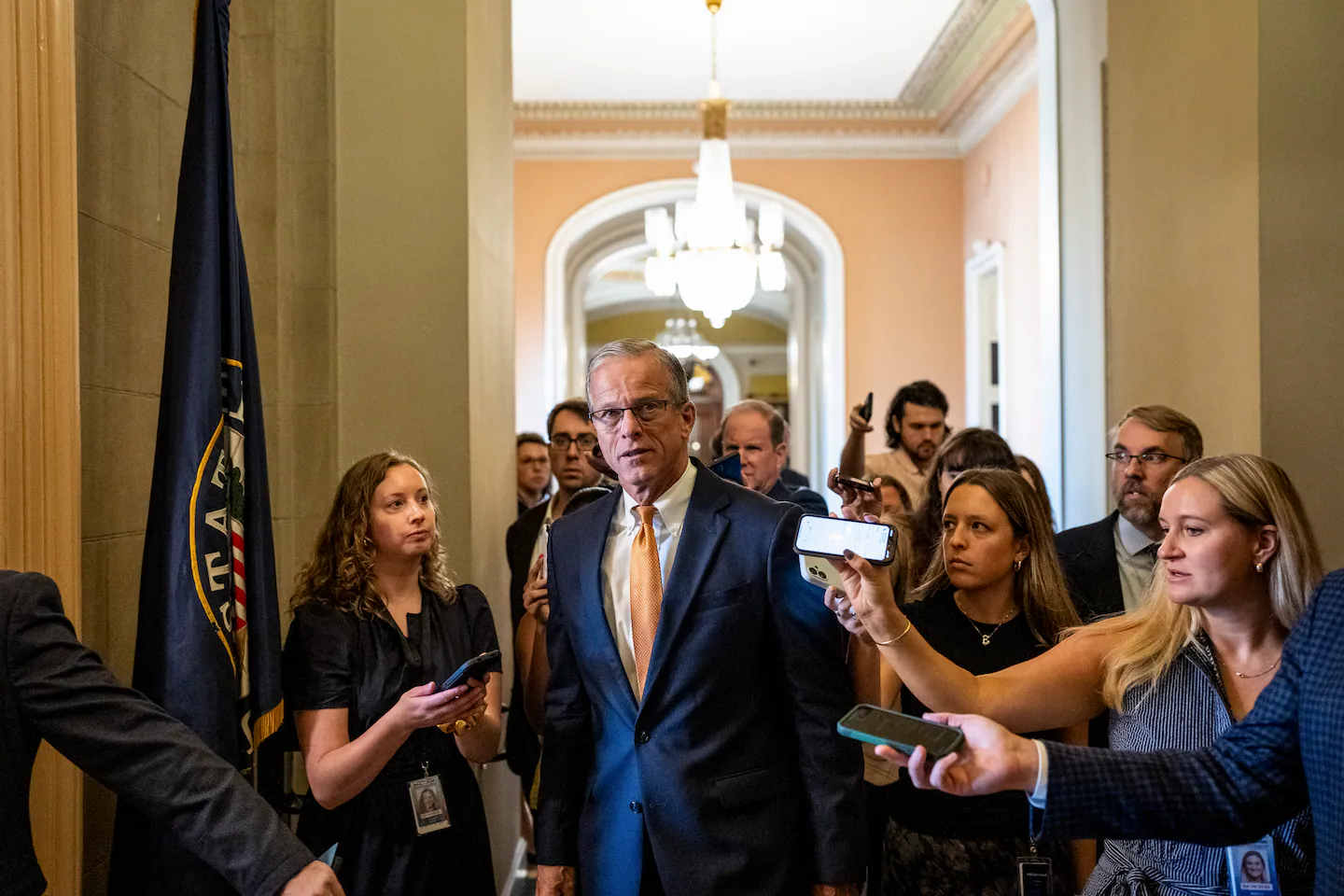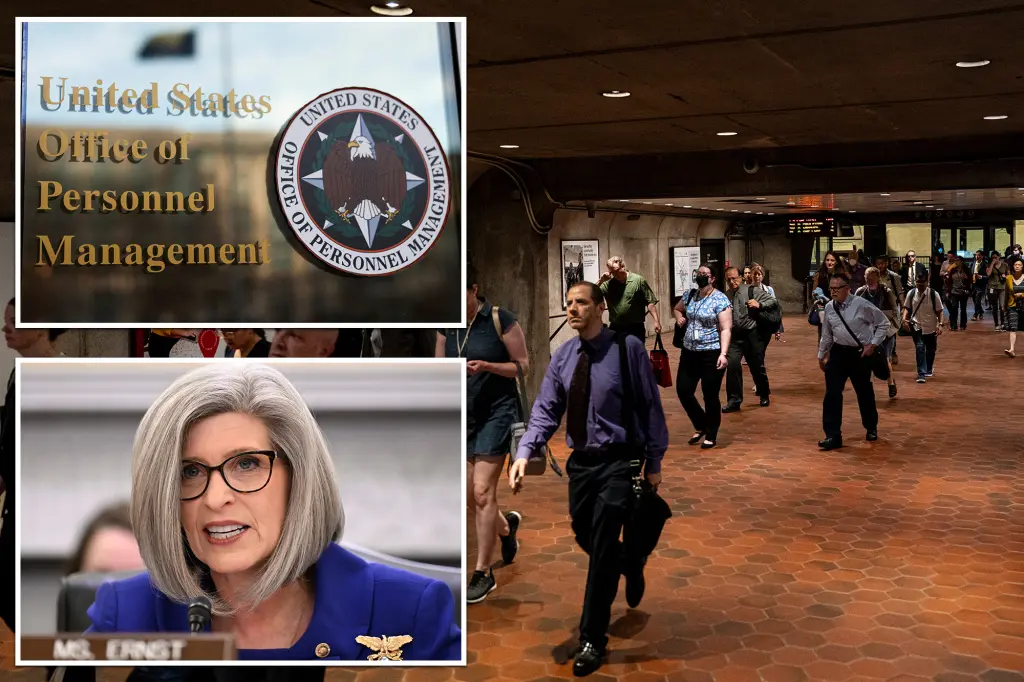
That will not be the case when it comes to funding the government, which Congress must do by Tuesday to avoid a shutdown.
Because Republicans have only a narrow majority in the Senate, passing a government spending bill that can win the necessary 60 votes depends on attracting at least a small amount of Democratic support. That will require bipartisan negotiation, an art that has been fading steadily on Capitol Hill and has so far been lost altogether during Trump’s second term.
Even talks around whether and when to meet have prompted a round of recriminations and finger-pointing. Trump said earlier this month that Republicans should not “even bother” negotiating with Democrats, and suggested his party could fund the government solely with Republican votes.
The characterization infuriated Democrats, who have demanded that any measure to extend spending also carry more than $1 trillion to continue Obamacare subsidies and reverse cuts to Medicaid and other health programs that Republicans made over the summer.
“The way this country works, you’ve got to sit down with people you may not agree with and come to an agreement, come to a negotiation,” Sen. Chuck Schumer, D-N.Y., the minority leader, said Tuesday after Trump canceled their meeting. “Donald Trump is not a king. He’s the president, and he has his responsibility to work to avoid the Trump shutdown, and time is of the essence.”
Trump canceled the meeting after a call with Speaker Mike Johnson and Sen. John Thune, R-S.D., the majority leader, who urged the president not to meet with Democratic leaders. Johnson had told reporters before the meeting was canceled that he was “not certain” it was “necessary.”
Republicans, who believe Democrats will be blamed for any shutdown, have noted that they are simply offering what has become the routine move on Capitol Hill for avoiding shutdowns: a temporary funding bill, known as a continuing resolution, or CR, that keeps federal spending levels flat. Under President Joe Biden, Thune told reporters last week, Republicans repeatedly agreed to such bills.
They have also relished digging up old quotes from Democrats arguing that debates around health care should be separate from funding discussions.
“The suggestion by the Democrats that they ought to be able to hijack a continuing resolution to attach a trillion dollars of policy is completely out of any sort of historical context of what CRs have been used for in the past,” Thune said.
GOP leaders have good reason to fear a meeting between the president and Democrats. Trump, who is supremely confident in his own deal-making skills, has a track record of complicating his own party’s position in high-stakes negotiations when he sits down with Democrats.
In 2018, before another government funding deadline, Trump declared in a televised negotiating session with Schumer and Rep. Nancy Pelosi of California, then the Democratic leader, that he would be “proud to shut down the government for border security.” In doing so, he violated an unwritten rule that has governed both parties’ approach to shutdown messaging for decades: Always make sure the other party shoulders the blame.
“I will take the mantle,” Trump said then. “I will be the one to shut it down — I’m not going to blame you for it.”
The president has also been known to vacillate wildly in such sessions, sometimes siding with his adversaries and endorsing politically popular policies that violate the long-held orthodoxies of his own party, leaving Republicans scrambling to sidestep his new position.
Trump already has displayed some discomfort with the unpopular Medicaid cuts included in his tax cut law, which Democrats have made clear would be on the table for reversal in any spending negotiation.
The gridlock in Congress is not new. For years now, lawmakers have mostly careened from one stopgap spending bill to another to fund the government, heading off a shutdown days or even minutes before the deadline. In doing so, they have essentially punted each time on resetting funding levels, kicking the can down the road for a few months.
The last time lawmakers negotiated spending bills — as opposed to simply extending funding levels with a temporary measure — was in early 2024, when Democrats controlled the White House and the Senate, and Republicans controlled the House.
Republicans were able to win cuts to the State Department and foreign aid programs, and more funding for border security measures, while Democrats secured a combined $1 billion in new funding for federal child care and education programs.
“It’s no small feat to get a package like this done in divided government,” Schumer said at the time.
But such negotiations have grown increasingly difficult.
While appropriators in the Senate this year have advanced largely bipartisan spending bills, for example, their counterparts in the House have put forward much more partisan measures enacting steep cuts across agencies.
While appropriators once prided themselves on the art of congressional deal-making — often greased by earmarks directing funds to their home states and districts — lawmakers largely acknowledge those days are behind them.
“I don’t want us to go from one reconciliation bill to a rescissions package to another rescissions package to a reconciliation package to a continuing resolution,” said Sen. Lisa Murkowski, R-Alaska. “We’re lawmakers. We should be legislating.”
In the few instances bipartisan negotiations have yielded results that have been enacted into law — the infrastructure bill passed under Biden, the spending bills in early 2024 and the last aid package Congress passed for Ukraine — they have provoked spasms of anger from the right.
Republicans who voted for the infrastructure law received violent threats; fewer than half of House Republicans voted for the spending bills; and the hard-right flank of the House GOP caucus moved to oust Johnson for allowing the Ukraine bill to be put to a vote.
At the same time, Schumer and Democrats experienced an angry backlash from their supporters for agreeing in March to supply the votes needed to move ahead with the stopgap spending measure that is about to expire.
Now, furious with the Trump administration’s attempts to unilaterally freeze and claw back funds, they are in no mood to strike a deal with a president they say could pull the rug out from underneath them at any moment.
“No one wants a shutdown, but agreeing to a deal that can be revoked whenever Trump demands it isn’t responsible,” said Rep. Brendan Boyle of Pennsylvania, the top Democrat on the Budget Committee. “It only teaches the other side that they can do it again and again.”
In that White House meeting in December 2018, just after the private negotiating session transformed into a televised airing of grievances roughly a week before the shutdown deadline, Trump privately displayed a burst of optimism. Away from the cameras, he mused about the potential for him to work alongside Democratic leaders in the new Congress.
What followed instead was a 34-day-long partial government shutdown, the longest in the country’s history.



